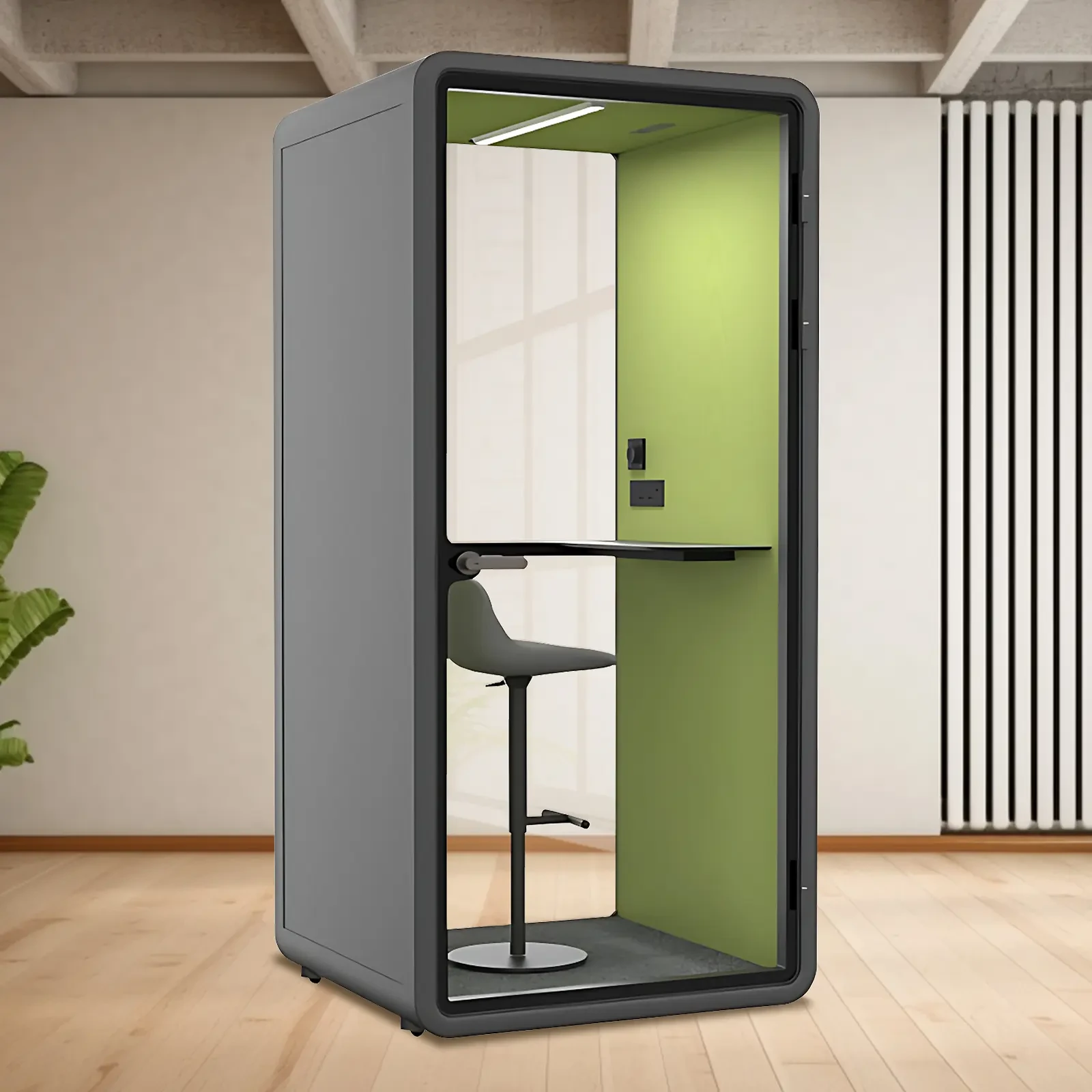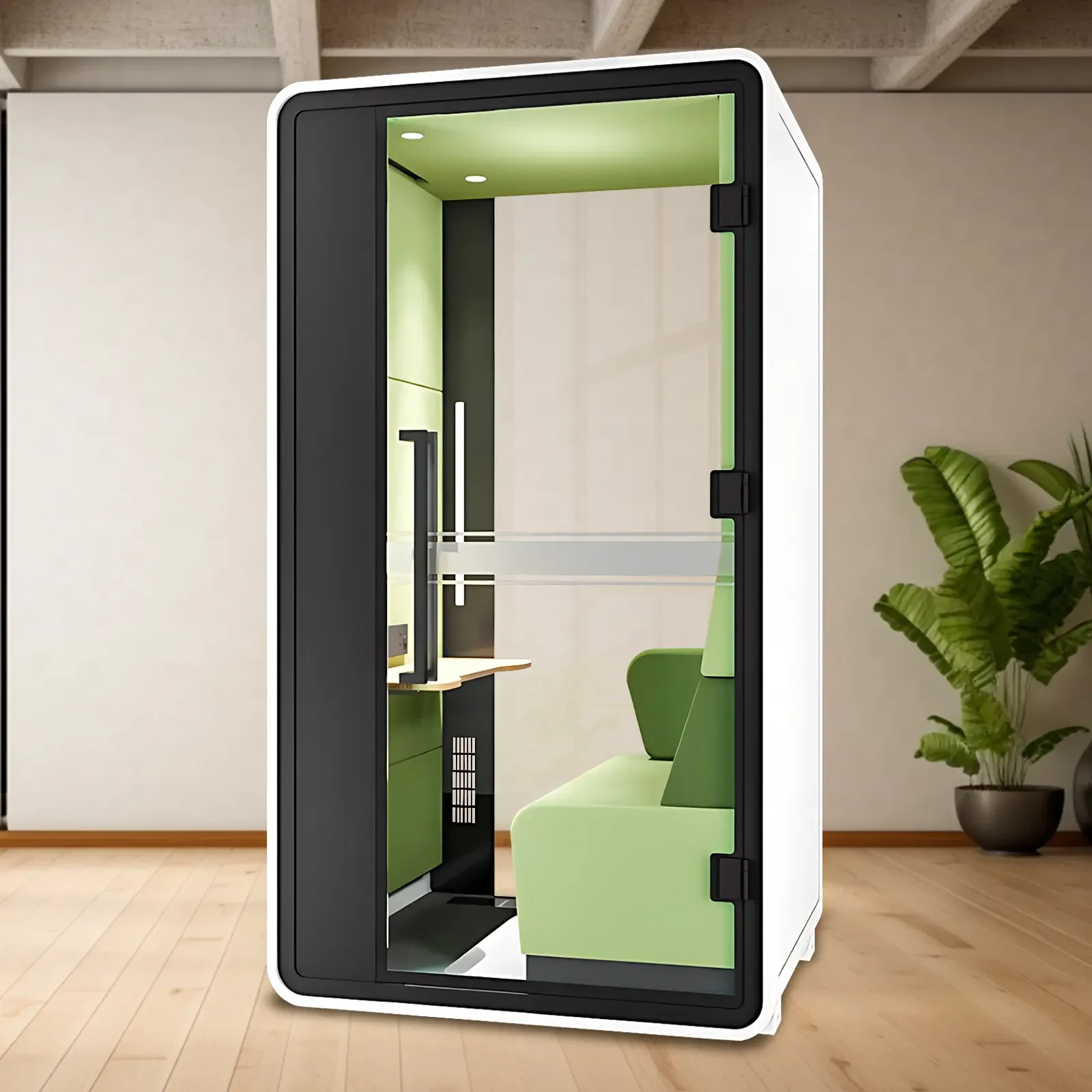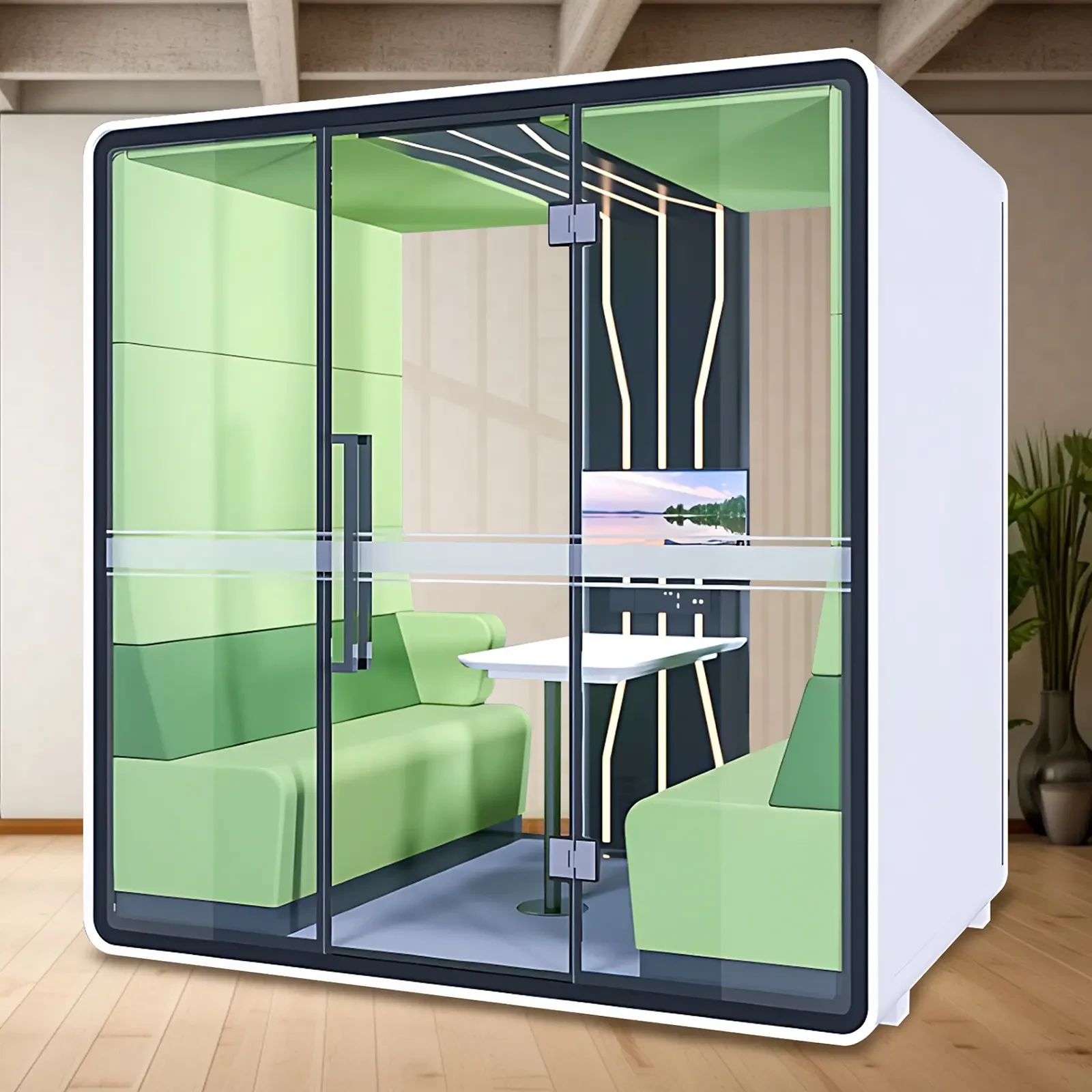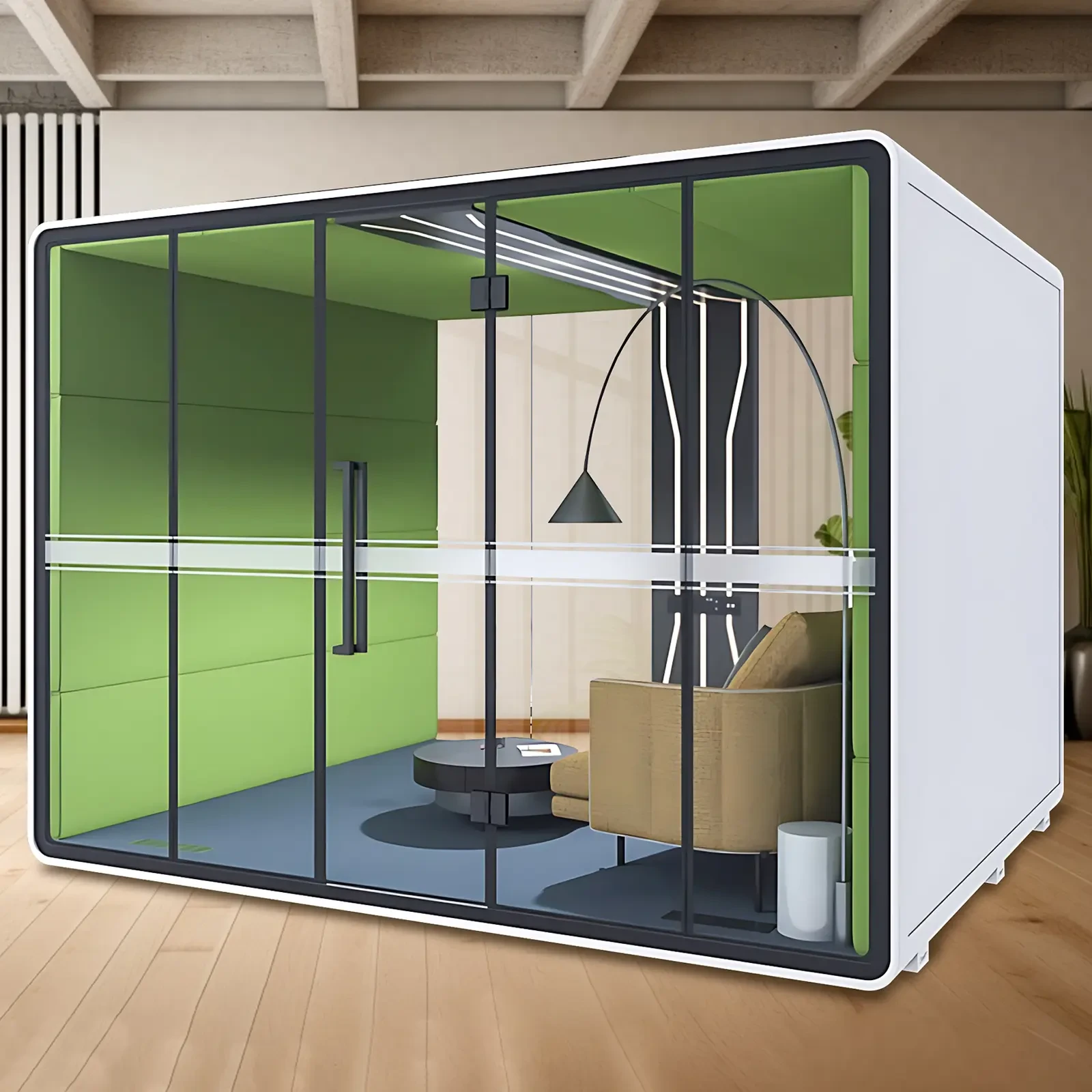Opening: Daily Life Dominated by Noise
Early morning, before the first rays of sunlight had fully penetrated the room, and I was deep in a sweet dream, the piercing sound of a power drill pierced my ears, instantly jarring me from sleep. I groggily opened my eyes, only to realize that my neighbor next door was renovating their home. This noise had woken me up for the third consecutive day. My dream of a weekend sleep-in was ruined.
Night should have been a peaceful time, but the square dance music outside my window was remarkably loud. The passionate melodies continued, one after another, from dusk until 9:00 PM. I sat at my desk, trying to concentrate on the work at hand, but the music, like an invisible hand, constantly tugged at my attention, distracting me. Even with headphones turned up to the maximum volume, I couldn't completely block out the intrusive sound.
I'm sure many people can relate to this experience of being disturbed by noise. These everyday noises may seem like minor annoyances, but like a slow-acting poison, they gradually erode our quality of life, turning once-good times into unbearable pain. Calling it a disaster is no exaggeration.
Noise-Infested Areas Exposed
Noise is ubiquitous in our lives, like hidden "noise bombs" poised to detonate our good moods at any moment.
Transportation hubs are among the worst-hit areas for noise. Train stations are bustling with people, the blaring announcements, the clatter of rolling luggage, and the clatter of conversation blending into a cacophony. The roar of an approaching train is like the roar of a giant beast, unnerving. At airports, the deafening roar of planes taking off and landing is deafening, threatening to burst your eardrums. In the terminal, anxiously awaiting their flights, the constant clamor of noises robs you of a moment's peace. This noise not only affects people's hearing but also makes an already tiring journey even more agonizing. Many people experience intense stress in such environments, and even after getting off a car or plane, they still feel a buzzing in their ears.
Construction sites are also a hotbed for noise. The roar of various construction machinery echoes endlessly, the sharp piercing of electric drills, the dull and heavy churn of mixers, and the pounding of pile drivers shakes the ground. Nearby residents suffer greatly. During the day, the noise prevents them from resting, working, or studying. At night, what should be a peaceful time for rest, the incessant din disrupts their peace. Over time, many suffer from insomnia and neurasthenia. One elderly man living near a construction site, already having trouble sleeping, has been frequently awakened by the noise since work began, and his mental state has deteriorated.
Busy shopping malls also make it difficult to find peace and quiet. To attract customers, merchants go to great lengths, blasting high-decibel promotional music and advertising slogans. The sounds of customers chatting and laughing, and children crying, mingled with the noise, making it feel like a bustling market. Shopping in such a noisy environment made it difficult to concentrate on selecting products, and many people hurriedly made their purchases before fleeing this chaotic place.
The Physical and Mental "Crisis" Caused by Noise
The harm caused by noise isn't just a deterioration of our living experience. More seriously, it acts like a hidden health threat, silently attacking our bodies and minds.
(I) Physiological Alarms
Long-term exposure to noise can damage our bodies in many ways. The hearing system is particularly vulnerable. Studies have shown that prolonged exposure to noise levels above 85 decibels can damage hearing. In some factory workshops, the roar of machinery often reaches 90 decibels or even higher. Many workers who work in such environments for long periods experience varying degrees of hearing loss, or even noise-induced hearing loss. This type of hearing loss is often irreversible. Once it occurs, it lasts a lifetime, severely impacting daily life and communication.
The cardiovascular system is also deeply affected by noise. Noise stimulates the body's sympathetic nervous system, causing it to become excited, leading to increased blood pressure and heart rate. A US study showed that people exposed to long-term noise have a 30% higher risk of developing hypertension. Chronic elevated heart rate and blood pressure also increase the workload on the heart, making it more susceptible to serious cardiovascular diseases such as heart attack and myocardial infarction. A Swiss study of residents near airports found that for every 10-decibel increase in aircraft noise at night, the risk of acute cardiovascular death increased by 44%. These data are undoubtedly alarming.
Sleep quality is also vulnerable to the "clutches" of noise. Sleep is a vital process for the body to restore energy and repair itself, but noise can severely disrupt sleep. At night, even the slightest noise, such as the hum of traffic or the hum of an air conditioner, can make it difficult to fall asleep or cause frequent awakenings, leading to shallow sleep and excessive dreaming. Chronic sleep deprivation can lead to fatigue, lethargy, weakened immunity, and a high risk of various illnesses. Statistics show that the incidence of insomnia among people chronically exposed to noise is 50% higher than among the normal population.
(II) Collapse of Psychological Defenses
Noise also has a range of negative psychological effects. When we are in a noisy environment, constantly bombarded with noise, negative emotions such as irritability and anxiety arise. This noise acts like a thorn, constantly irritating our nerves and making our mood deteriorate. In the office, the constant chatter of colleagues and the hum of printers can easily make people irritable and unable to concentrate on their work. Long-term exposure to such noise can also lead to mental illnesses such as anxiety and depression.
Noise can also severely impact our attention and memory. When our brains are flooded with noise, it becomes difficult to focus on a single task, and learning and work efficiency declines significantly. Students who study in a noisy environment have difficulty retaining what they've learned, and their test scores suffer. Office workers who work in a noisy environment are more likely to make mistakes, which can delay their work progress. Studies have shown that studying or working in a noisy environment can reduce efficiency by 30%-40%.
This shows that noise is extremely harmful to our physical and mental health. It's like a time bomb, poised to detonate at any moment and plunge us into a health crisis and put our lives in jeopardy.
The "tragedies" caused by noise
The harm caused by noise goes far beyond simply affecting personal lives. It can also be like a destructive "bomb," triggering a series of serious consequences in various scenarios, even leading to irreparable tragedies.
(1) Neighbors Turning Against One Another
In our daily lives, neighbors should live in harmony and support each other. However, noise often becomes the trigger that disrupts this harmonious relationship, turning once-friendly neighbors into enemies.
In a certain residential complex, the upstairs resident has a lively child who often runs around and plays, making a lot of noise. The downstairs residents were deeply disturbed, especially at night, when the noise kept them awake. Initially, they politely approached the upstairs residents, hoping they would pay attention to their children's behavior and reduce the noise. The upstairs residents also promised to do their best to control their children. But after a few days, the noise persisted. The downstairs residents returned to address the situation, but both sides were hostile and a verbal conflict ensued. The conflict escalated, with the upstairs residents deliberately creating more noise, and the downstairs residents retaliating with floor vibration devices. From being neighbors who greeted each other, the two families became enemies, with repeated calls to the police and legal action. Their once peaceful lives were completely shattered.
This is not an isolated case. According to relevant data, noise accounts for as much as 30% of all neighborhood disputes. Noise, like a sharp knife, severs friendly ties between neighbors and fills a once warm living environment with a tinge of hostility.
(II) Scientific Research Achievements Failed
In some specific scenarios, the consequences of noise are even more severe, potentially destroying scientific research. A heartbreaking incident occurred at Rensselaer Polytechnic Institute in New York, USA. A janitor was cleaning a laboratory when he heard a persistent alarm from an ultra-low-temperature freezer. The sound annoyed him. Without carefully checking the labeling and instructions on the refrigerator, he simply turned off the power to the freezer. The freezer contained crucial experimental materials, such as cell cultures and samples, which needed to be kept at -44°C. The power outage caused the temperature inside the freezer to rise rapidly, irreparably damaging the experimental materials and instantly destroying 25 years of research.
This incident dealt a heavy blow to the research team, and restarting the research is expected to cost $1 million. For researchers, every scientific achievement represents the culmination of countless hours of hard work and dedication, the culmination of years of tireless effort. It is truly regrettable that such a seemingly innocuous noise could undo all that effort.
As can be seen, the harm of noise is multifaceted. It not only disrupts the harmony of our lives but can also cause irreparable damage in key areas. We must take this issue seriously and work together to take effective measures to reduce noise and restore peace to our lives.
What Can We Do About Noise?
Faced with the various harms caused by noise, we cannot sit idly by. We must take action and implement effective measures to reduce noise disruption and restore peace to our lives. This requires joint efforts at both the individual and societal levels.
(I) Personal "Noise Reduction" Tips
In our daily lives, we can adopt some simple yet effective methods to reduce the impact of noise on ourselves. Noise-isolating earplugs are a good choice. They are compact, easy to carry, and effectively reduce external noise. There are many types of noise-isolating earplugs available on the market, primarily made of silicone, foam, and wax. Foam earplugs are soft, comfortable, and offer excellent soundproofing, making them popular with students and factory workers. Silicone earplugs are reusable, relatively inexpensive, and more suitable for use in offices and study spaces. Wax earplugs are suitable for those who prefer in-ear earplugs or have particularly sensitive ears. When purchasing soundproofing earplugs, choose the appropriate model and material based on your needs and ear canal size. Also, check the noise reduction rating. Generally speaking, the higher the rating, the better the soundproofing.
Soundproof curtains are also a great way to reduce indoor noise. They work similarly to the second layer of a double-layered window, using thick fabric to absorb and block noise. When choosing soundproof curtains, consider the thickness and structure of the fabric. Generally speaking, thicker fabrics better block sound transmission, and multi-layered curtains offer better soundproofing than single-layered ones. In addition, some soundproof curtains have a special coating on the inside to increase the curtain's overall airtightness and reduce sound penetration. When installing soundproof curtains, ensure they are installed flat, avoiding wrinkles or gaps, to maximize their soundproofing effect.
If you frequently work or study in a noisy environment, noise-canceling headphones are essential. Noise-canceling headphones are primarily categorized as active and passive. Active noise-canceling headphones use built-in microphones to collect external noise and then generate opposing sound waves to cancel it out, effectively reducing mid- and low-frequency noise. Passive noise-canceling headphones primarily block noise through the physical structure of the earplugs or earmuffs, providing better isolation for high-frequency noise. When choosing noise-canceling headphones, choose the right product based on your usage scenario and budget. For example, if you frequently use them in noisy environments like subways and buses, choose headphones with better active noise-canceling performance. If you only use them in relatively quiet environments like offices, passive noise-canceling headphones may be sufficient.
(II) Societal "Noise Reduction" Actions
Reducing noise isn't just a personal endeavor; it requires the concerted efforts of society as a whole. The government and relevant departments shoulder important responsibilities in this regard and need to implement a series of measures to strengthen noise pollution control. Strengthening legislation and regulation of noise pollution is crucial. The government should formulate stricter noise emission standards and laws and regulations, clarify restrictions and penalties for various noise sources, and increase penalties for violations. For example, construction work should be prohibited during specific hours, with penalties such as fines and work stoppages imposed on construction units that violate these regulations. Noise-generating activities such as the use of loudspeakers in commercial operations should also be penalized accordingly. At the same time, relevant departments should strengthen noise pollution oversight, establish a comprehensive noise monitoring system, and promptly identify and address noise pollution issues.
Optimizing urban planning can also reduce noise pollution at the source. During urban construction, rationally planning the layout of transportation routes, industrial zones, and residential areas should be done to avoid placing major traffic arteries and factories too close to residential areas. Installing noise barriers and planting green belts along major traffic arteries can effectively reduce the impact of traffic noise on residents. Green belts not only absorb some noise but also beautify the environment and improve air quality, achieving multiple goals at once. Promoting environmentally friendly and silent equipment is also an effective way to reduce noise pollution. Encourage enterprises to develop and produce low-noise machinery and vehicles, use silent construction equipment in construction, and promote the use of quiet household appliances in daily life.
Conclusion: "March Toward a Quiet Lifestyle"
Noise is like a war without gunpowder, silently encroaching on every aspect of our lives, causing significant harm to our physical and mental health, quality of life, and even social harmony. It is an "invisible killer" in our lives and must be taken seriously.
At the individual level, we must strengthen our awareness of self-protection and learn to use various noise reduction methods to minimize its impact. Small tools like earplugs, soundproof curtains, and noise-canceling headphones can play a significant role at critical moments, helping us find a quiet space in a noisy world. At the same time, we must also be mindful of our own behavior and avoid becoming noisemakers. For example, we should maintain quiet in public places, schedule renovations appropriately, and control the volume of home appliances and entertainment activities.
Socially, the government and relevant departments should intensify efforts to control noise pollution, improve laws and regulations, strengthen supervision and enforcement, and ensure that those who cause noise pollution receive due punishment. At the same time, we must promote public awareness of the dangers of noise pollution through publicity and education, strengthen environmental awareness and public morality, and encourage everyone to consciously contribute to reducing noise.
Let us take action, starting with ourselves and the small things around us, to jointly resist noise and "march" towards a quiet life. I believe that through our joint efforts, we will be able to create a quiet, comfortable, and harmonious living environment, and let our lives be filled with tranquility and beauty again.

 USD
USD
 GBP
GBP
 EUR
EUR






